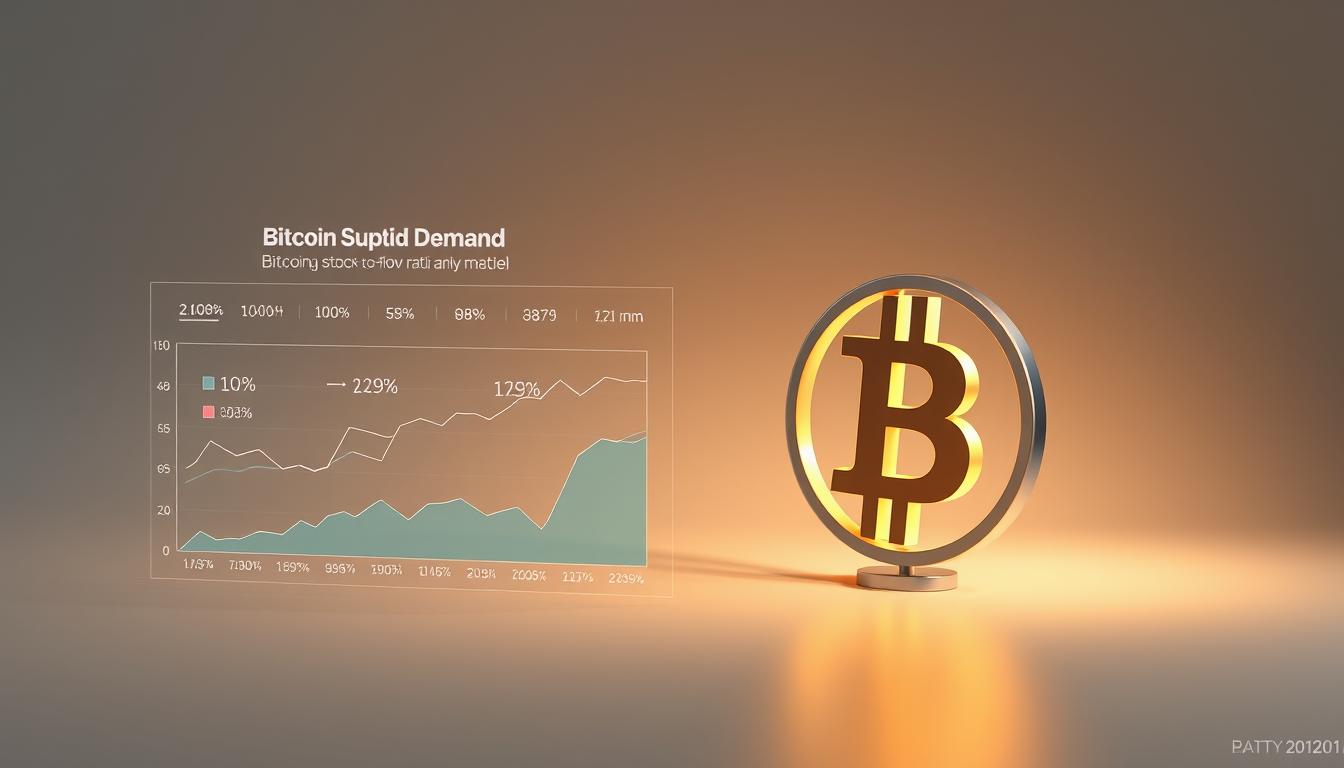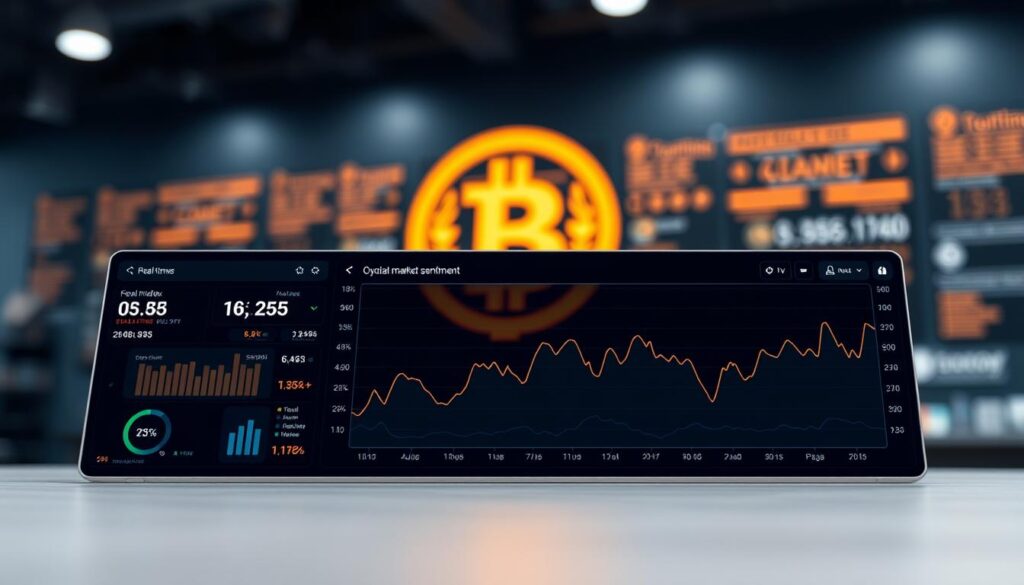Now Reading: Bitcoin Supply Demand Stock Flow: A Detailed Analysis
- 01
Bitcoin Supply Demand Stock Flow: A Detailed Analysis
Bitcoin Supply Demand Stock Flow: A Detailed Analysis

Understanding what drives the value of a unique digital asset can be complex. This guide breaks down a powerful framework used by many analysts. We explore the relationship between existing reserves and new issuance.
The core idea revolves around programmed scarcity. Unlike traditional currencies, this asset has a fixed lifetime cap. This creates a predictable economic model.
We will examine the famous Stock-to-Flow model in detail. This mathematical approach helps quantify scarcity. It has become a cornerstone for assessing long-term value.
Our analysis covers how halving events impact the new coin flow. We also look at market psychology and global economic factors. This gives a complete picture of the valuation dynamics.
By the end, you will grasp the strengths and limits of this approach. This knowledge empowers smarter investment decisions in a volatile market.
Introduction to Bitcoin Supply Demand Stock Flow
The mathematical framework for assessing cryptocurrency value draws from centuries-old economic principles. This approach helps investors understand how digital scarcity influences long-term valuation.
What It Is and Why It Matters
The Stock-to-Flow model quantifies scarcity by comparing existing reserves against new production rates. This analytical tool provides measurable metrics for evaluating investment potential.
This framework matters because programmed limitations distinguish digital currencies from traditional ones. The model offers insights beyond short-term market sentiment.
Historical Perspective and Market Context
Since 2009, this digital asset has followed a predictable issuance schedule. The model gained prominence when analyst PlanB demonstrated its correlation with market price patterns.
Market cycles have shown how scarcity influences valuation across different economic environments. Understanding these dynamics helps investors make informed decisions, as detailed in this comprehensive analysis of digital assets.
Fundamentals of the Stock-to-Flow Model
Quantifying scarcity requires a clear separation between an asset’s total inventory and its annual production. This distinction forms the bedrock of the analytical framework.

Understanding Stock versus Flow
The stock is the entire existing quantity of an asset. For our subject, this figure nears 19.7 million units.
The flow represents new units created each year. This amount decreases on a set schedule.
Dividing the stock by the flow gives the core ratio. This number shows how many years of current production would equal the existing reserve.
Mathematical Projection and Logarithmic Regression
Analyst PlanB used this ratio to build a predictive model. He plotted historical price data against the scarcity metric.
The analysis uses a logarithmic regression. The formula ln(Price) = a + b × ln(S2F) projects future value based on evolving scarcity.
This model offers a quantitative view of potential appreciation. It is, however, a theoretical tool, not a certainty.
Bitcoin supply demand stock flow: Understanding Its Core Components
To grasp the mechanics of digital scarcity, we must first dissect its fundamental building blocks. These components provide the raw data for the powerful analytical tools discussed earlier.

Defining Stock and Flow in Bitcoin
The stock is the entire existing quantity of bitcoin. It represents all units ever created and currently in circulation.
After the 2024 halving, this figure is approximately 19.7 million btc. It steadily approaches the maximum total supply of 21 million.
Conversely, the flow is the rate of new issuance. This is the amount of new btc mined each year as block rewards.
The current flow is around 164,000 bitcoin annually. This number is programmed to decrease over time.
Calculating the Stock-to-Flow Ratio
The flow ratio quantifies scarcity through a simple division. You divide the stock by the flow.
Using the latest data: 19.7 million (stock) / 164,000 (flow) ≈ 120. This is the current flow ratio.
This result means it would take about 120 years to reproduce the existing supply at the current production rate. This high number is a cornerstone of the flow model and underscores the asset’s unique scarcity.
The Impact of Bitcoin Halving Events on Scarcity
The halving mechanism represents one of the most anticipated events in the digital asset ecosystem. It is a core feature programmed into the protocol that occurs roughly every four years.
This event systematically reduces the reward miners receive for validating new blocks. The result is a direct and immediate cut to the new coin flow.
Timeline of Halving Events and Their Effects
The schedule of these events demonstrates a predictable deflationary path. It began with 50 BTC per block in 2009.
Rewards were halved to 25 BTC in 2012, then to 12.5 BTC in 2016. The most recent events in 2020 and 2024 brought rewards down to 6.25 BTC and 3.125 BTC, respectively.
Historical data shows a compelling pattern following each halving. After the 2012 event, the bitcoin price climbed from around $12 to over $1,000.
A similar surge occurred after the 2016 event, with the price rising from approximately $650 to $20,000. The 2020 halving preceded a run to over $60,000.
Halving as a Scarcity Catalyst
Each halving acts as a powerful scarcity catalyst. It cuts the annual new supply in half while the total existing reserve grows.
This action effectively doubles the stock-to-flow ratio instantly. The asset becomes significantly harder to produce relative to its existing size.
This built-in scarcity mechanism creates anticipatory market psychology. Investors often position themselves ahead of the reduced flow, influencing the bitcoin price cycle.
Understanding these events is crucial. They provide predictable inflection points based on quantifiable scarcity.
Market Dynamics and External Influences
While programmed scarcity provides a foundational framework, real-world market dynamics introduce powerful variables that shape valuation. These external factors often create price movements that diverge from theoretical models.
Understanding these influences helps investors make more informed decisions. The interplay between scarcity and market forces creates complex investment landscapes.

Investor Sentiment and Adoption Trends
Market psychology drives significant short-term volatility. Fear and greed among investors can override fundamental scarcity metrics.
Adoption trends represent another critical demand driver. Increased institutional acceptance and retail usage create sustained buying pressure.
This growing adoption complements the asset’s scarcity profile. More users and applications increase network value beyond mere scarcity.
Regulatory, Technological, and Economic Factors
Government policies significantly impact market conditions. Favorable regulations can boost adoption, while restrictions may limit growth.
Technological improvements enhance usability and security. These advancements make the network more attractive to new investors.
Macroeconomic conditions influence investment decisions. During economic uncertainty, many seek alternative assets as hedges.
For deeper insights into these complex market interactions, consider analyzing crypto market trends through multiple lenses.
Mining difficulty adjustments occur regularly, affecting production rate. This self-correcting mechanism ensures network stability.
Competition from other cryptocurrencies introduces additional market pressures. Different features and use cases attract diverse investor interest.
Comparative Analysis: Bitcoin Versus Traditional Assets
The scarcity metrics of various assets provide critical insights into their long-term value preservation capabilities. This comparison reveals why certain investments maintain their worth across economic cycles.

Bitcoin as Digital Gold
Many analysts describe this digital asset as digital gold due to its exceptional scarcity profile. With a flow ratio near 112 after the 2024 event, it surpasses gold’s ratio of 60-70.
This superior scarcity combines with technological advantages. The asset offers perfect portability and global transferability that physical metals cannot match.
These characteristics create a compelling modern store value proposition. It appeals particularly to investors concerned about traditional financial system vulnerabilities.
Scarcity Metrics in Gold, Silver, and Fiat Currencies
Gold maintains its store value status through limited annual production relative to existing reserves. Its high flow ratio provides durability against inflation over centuries.
Silver demonstrates lower scarcity with a ratio around 20. This reflects its dual role as both monetary metal and industrial commodity.
Fiat currencies present the opposite extreme. Central banks can expand monetary supply without limits, leading to purchasing power erosion.
Understanding these differences helps investors navigate complex traditional stock market correlations and make informed allocation decisions.
Future Outlook and Price Predictions
Looking ahead requires understanding how scarcity models project future valuation. The mathematical framework provides a structured way to anticipate potential price movements based on programmed scarcity.
Various analysts have developed different predictions using quantitative approaches. These forecasts help investors consider potential long-term value appreciation.
Potential Impact of Upcoming Halvings
The scheduled reductions in new issuance continue to influence the scarcity profile. Each event cuts the production rate in half while the existing reserve grows.
This mechanism directly affects the mathematical model used for price projections. Historical data shows significant valuation increases following previous events.
Long-Term Predictions and Market Scenarios
Analyst projections span a wide range from conservative to extremely bullish. The variation reflects different assumptions about adoption and market conditions.
| Analyst/Model | Timeframe | Price Prediction | Key Assumptions |
|---|---|---|---|
| PlanB S2F Model | 2024-2025 | $55,000 – $1 million | Historical correlation continues |
| ARK Invest | 2030 | $1 million | Institutional adoption accelerates |
| Hal Finney Thought Experiment | Long-term | $10 million | Captures global wealth percentage |
| Moderate Scenario | Next cycle | $100,000-$150,000 | Steady adoption continues |
These predictions should be considered speculative rather than guaranteed. Market dynamics, regulatory changes, and competition from other cryptocurrencies could significantly alter actual outcomes.
Investors should approach trading strategies with proper risk management. While the flow model provides interesting data, real-world results may differ from theoretical projections.
Conclusion
Understanding scarcity dynamics requires balancing mathematical frameworks with real-world factors. The Stock-to-Flow model provides investors with a quantitative approach to assess long-term value.
This analytical tool measures existing reserves against new issuance rates. It creates a predictable scarcity ratio that distinguishes digital assets from traditional currencies.
However, investors should recognize the model’s limitations. It focuses primarily on supply-side dynamics while market sentiment and external factors significantly influence actual price movements.
The most effective strategy combines this scarcity framework with comprehensive analysis. This includes monitoring adoption trends, regulatory developments, and broader economic conditions.
Successful investment decisions balance quantitative data with practical market awareness. This approach acknowledges both the power and boundaries of scarcity-based valuation models.















